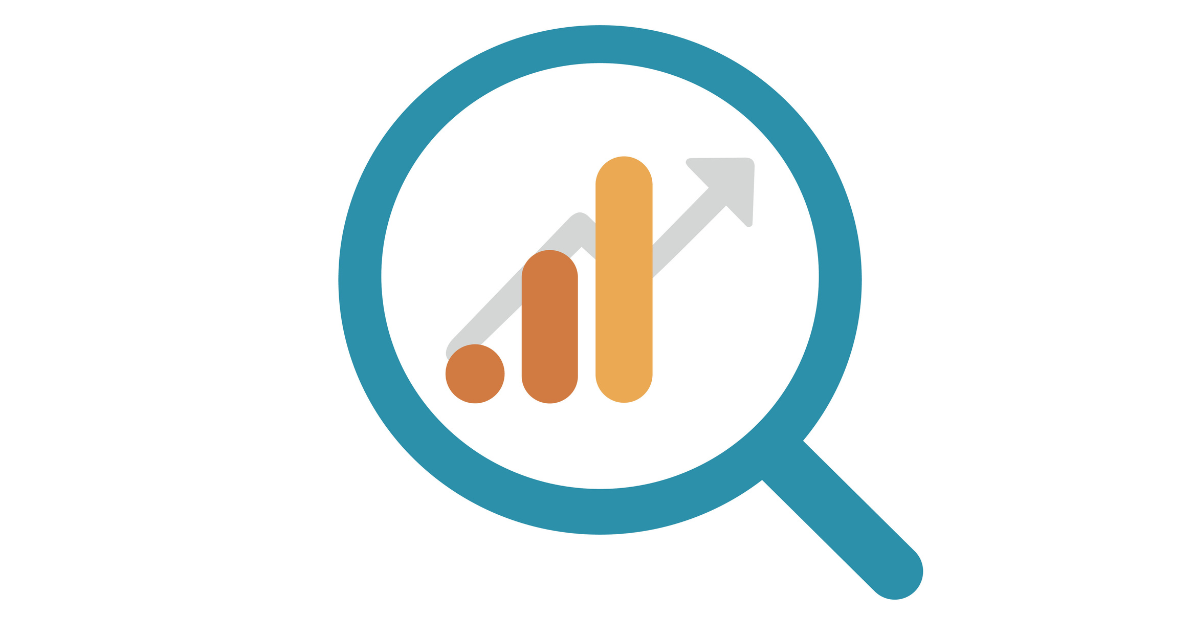Google Analytics is a powerful tool that you’ll find in pretty much every marketer’s stack. With it, you have the ability to track hundreds of metrics across your entire marketing stack to your sales funnel and leverage it in your marketing game to improve your strategy.
This is valuable information right at your fingertips but even we have to admit that it can be overwhelming to look at all at once. While data is an important driver of well-planned and executed campaigns, you don’t want to get stuck in the world of metrics and lose sight of the overall vision. This is why we recommend uncovering the most important Google Analytics metrics for your company and gaining a clear idea of what data plays into your marketing strategy the most.
What Does Google Analytics Measure?
On a broad scale, Google Analytics measures metrics — a piece of quantitative data that gives you insight on how your business fared during a specific period of time or during a specific campaign. These metrics track all sorts of information, from the number of people who come across your company to the amount of time they spent on your pages to the actions they took while on it.
An example of a few of the metrics included in Google Analytics:
- Users (people who visit your site)
- Sessions (user interactions within a given time)
- Devices (desktop, mobile, tablet, etc.)
- Bounce rate (sessions that exit without taking action)
- Entrances (homepage, pricing page, about us page)
- Exit rate (rate users leave the site)
While these numbers may come across as independent points, they can be layered and pieced together into an overall story that explains what worked and what didn’t. This is done using attributes of your data known as dimensions. Dimensions are criteria that your metrics can be measured against and that bring life to the data. Think categorical variables such as browser or places. For example, you can look into users by location to understand where your audience is coming from or if you’re properly reaching your target demographic.
Most Important Google Analytics Metrics
Utilizing metrics to fuel your understanding of the customer journey is how you increase your retention and conversion rate. While marketers get pulled into the excitement of creative campaigns, the end goal is to improve the results that your sales funnel produces from better leads to higher conversions. You can do so by consciously choosing which metrics to focus on for your brand and optimizing those specifically.
Here are some important GA metrics that many focus on:
Users
This refers to unique visitors that land on your website. Whenever this happens, Google Analytics will assign them a unique client ID stored as a cookie. This allows Google Analytics to keep track of returning users versus new users.
Sessions
A session begins as soon as someone loads your webpage and ends after 30 minutes of inactivity on the site. During an open session, Google Analytics tracks every action that a user takes whether that’s viewing a page, clicking on a button, or completing a transaction.
It’s important to remember that one user can trigger multiple sessions if they revisit your website after their previous session ends, so don’t use this to bolster your website visit knowledge but instead use it to examine changes in session or effectiveness of campaigns.
Devices
Optimizing the way our pages look on different devices can do a lot to improve the overall user experience. However, oftentimes, our audiences aren’t equally spread out across all platforms. This metric can help determine where you want to invest your efforts to improve browsing experience. You may find that most of the site traffic is coming from mobile even though you’re putting resources towards desktops.
Goal Completions
This refers to the number of times users complete specific goals that you’ve previously defined. Goals are different for each campaign, each site, and each company. For some this can look like a purchase while others may designate other actions as a goal completion. Examples include following a link, filling out a form, or signing up for emails.
Sessions by Channel
You’re able to track the performance of individual channels that you use in your marketing plan. This gives you somewhere to reference all the places that users are interacting with whether that’s through organic and paid efforts or through social media and email. With this information you can visualize what channels are working really well and which ones need new strategies.
Bounce Rate
Bounce rates show the number of times users visit a site and leave almost immediately after. These users aren’t taking any actions or interacting with your site. High bounce rates can signal some sort of disconnect in your website’s flow, whether that’s high load times, poor design, or complicated processes to take an action.
The metrics that are most important for your company will vary a bit depending on your goals each quarter and your overall goals for the business.
Different brands will find different information valuable. You may be someone who’s very concerned with exit rates and are utilizing Google Analytics data to gauge why people may be leaving your site. Others may not care too much about this metric at all because it doesn’t impact their overall marketing plan. While there are endless reasons to vouch for prioritizing one metric over another, at the end of the day it is your brand’s goals that dictate your GA tracking needs.
What You Can’t Measure in Google Analytics
It may seem like the opportunities for exploring your marketing results are limitless when it comes to Google Analytics. With a tool as all-encompassing as Google Analytics, we can fall into the habit of relying on it a little too much and overanalyzing the data.
Using GA metrics to identify areas of improvement is important, but it is also important to remember that the numbers generated aren’t a comprehensive look into the progress of your company. The data isn’t 100 percent precise and behind each data point is a person whose thoughts and actions aren’t as easily defined — you have different reasons behind visiting a website than I do, or your customer does.
To dive into the why behind the GA metrics you’re seeing, leverage additional tools and perform research to understand the users visiting your site. There are a variety of user tracking tools out there but don’t limit yourself to tools that do all the work. Give it a try yourself and dip into different data collecting methods like A/B testing various versions of your pages or looping in your marketing automation and CRM tech stack to get a full picture of how it all connects.
Google Analytics Best Practices
Google Analytics is a valuable tool that supplies plenty of concrete data to drive your business decisions.
When working with this analytics tool, remember to stay focused on what you are measuring and the reason behind it. It can be easy to get distracted by the numbers and excited about reports and forget about KPIs that will actually help you achieve your objectives. As a follow-up to this, also be sure to utilize the custom dashboards function so that you keep the pertinent data front and center.
Remember to look beyond current data to get a better idea of what’s been happening. Realtime results are great, and Google Analytics also helps you out with displays of the past 30 days, but to get the full story, historic data needs to be added to the mix. This will show you the before and after impacts of your improvements and how you’ve been trending overall.
Finally, analytics gives you a method to find the root of your questions and problems. The best part about Google Analytics is that you have a great place to start whenever you’re concerned, confused, or curious. If you notice something isn’t performing to expectations, the data will show you why. Start out by outlining the dimension and metric that pertains to the issue and leverage your tools, teams, and your personal experience as a user to get to the bottom of it.
Need help tracking and analyzing your marketing data? Contact us at expert@emfluence.com!



